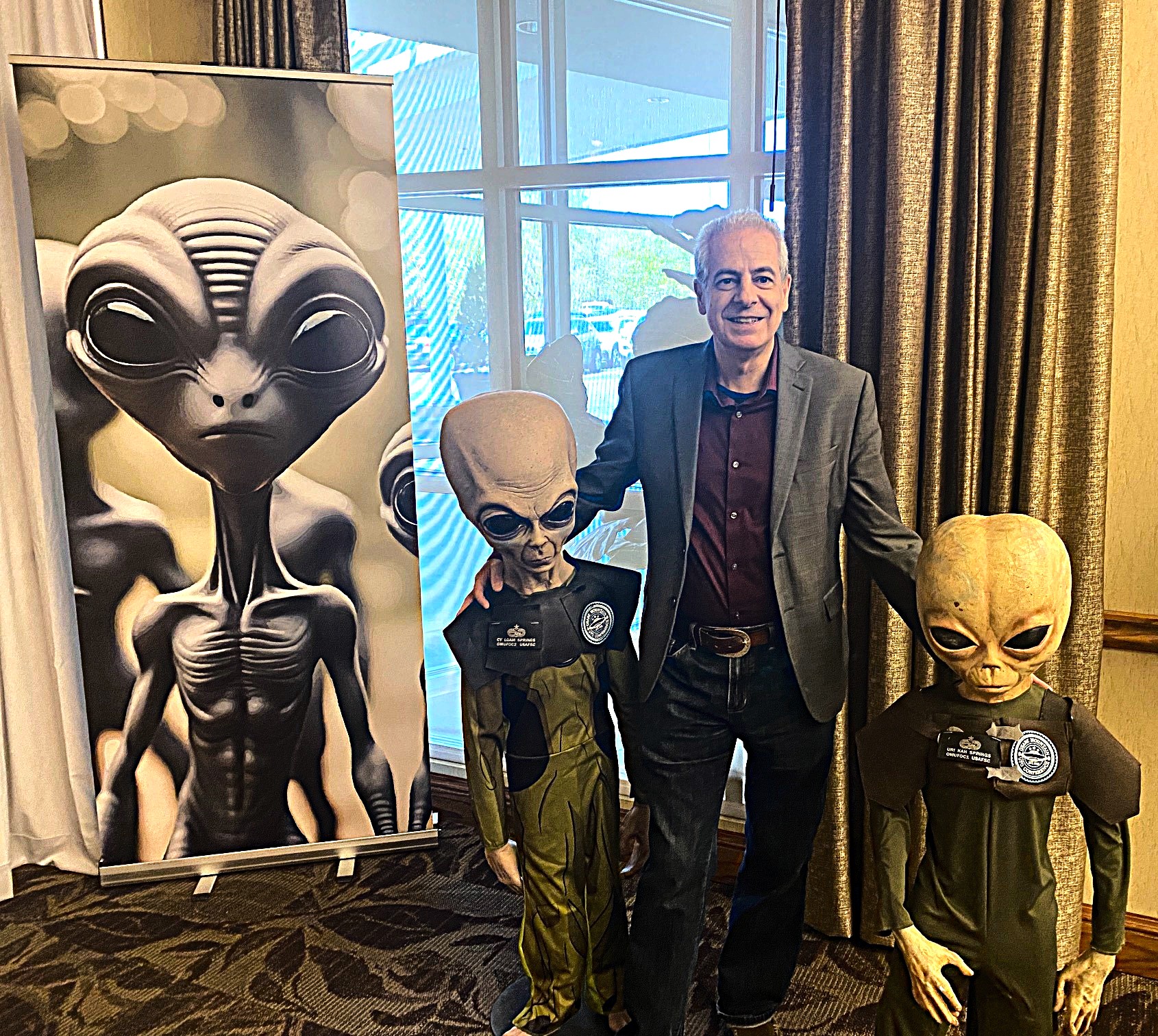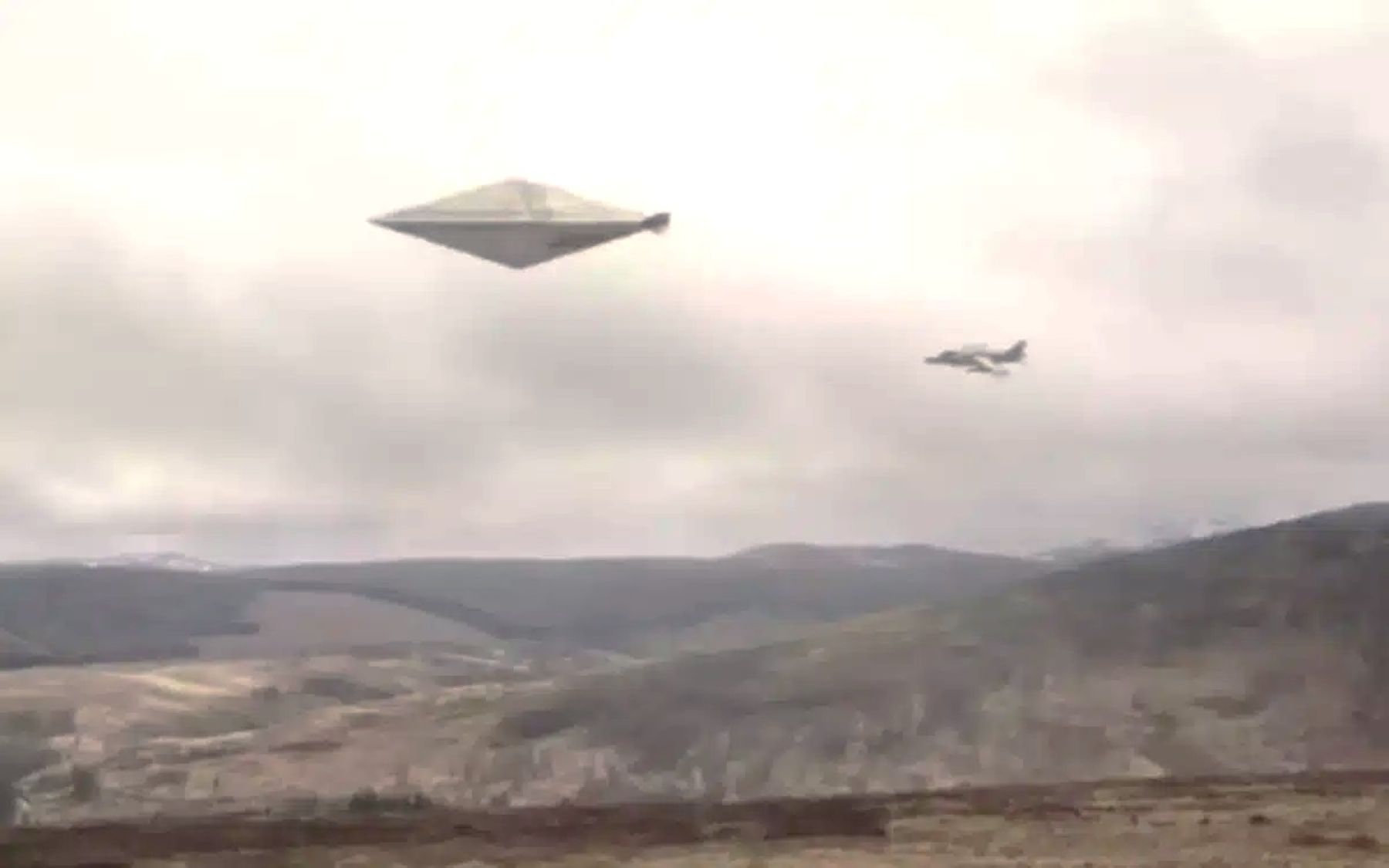
The topic of UFOs (unidentified flying objects) – or as the US government has taken to calling them in the last several years, UAPs (unidentified aerial phenomena) – has never been as hot as it is right now.
There have been whispers and legends of encounters with flying saucers and foo fighters in the popular discourse going back to World War II. With the release of official footage of giant airborne objects buzzing jet fighters at speeds that break the laws of physics, and highly-credible members of the intelligence community blowing the whistle in congress on a secret crash retrieval program that’s keeping the presence of “non-human intelligence” secret from the public for more than 80 years, it feels like the truth isn’t just out there anymore – it’s almost here.
A common misconception amongst critics and skeptics alike is that this whole UFO phenomenon is an American one; after all, the most famous conspiracy theories are set in the United States; Roswell. Area 51. The Phoenix Lights. It’s almost like these encounters only occur in American skies. Nothing could be further from the truth – this is a worldwide phenomenon.
According to Nick Pope, a former agent of the UK’s Ministry of Defence, a favourite spot that the green little men seem to love to visit here on Earth is the British Isles.
“Scotland, in particular, is a real UFO hot-spot,” Pope writes in an email exchange with Celtic Life International. You might recognize Pope as one of the talking heads on programs like Ancient Aliens and any number of one-off UFO documentaries between the early 1990s and today. He has good reason to be, too; from 1991 to 1994, Pope was essentially the real-life equivalent of a British Fox Mulder.
“After I left government service, the U.K. declassified many of its UFO files, with thousands of documents being released – many of which I wrote. While I’ve been involved in everything from financial policy to counter-terrorism, I am best-known for having worked on the so-called UFO Desk, handling policy on the subject and investigating the several hundred sighting reports we received each year.
“With my name in the public domain, I became sought after as a media commentator on this subject. So, within the confines of the U.K.’s Official Secrets Act – which is binding for life – I’ve become a regular guest on TV news programmes when a UFO story breaks, appeared on numerous documentaries, and have acted as consultant and spokesperson on a wide range of UFO and alien-themed movies and TV shows.”
As arguably the best expert on the topic that isn’t in some top-secret bunker somewhere, we asked Pope to weigh in on some of the best and most compelling UFO encounters across the Celtic nations, starting with Scotland.

Pope begins by urging that, for every report made – every encounter that makes it to your eyes or ears – there are probably tens or hundreds more that are lost to history, because whoever witnessed them never breathed a word of it.
“There’s always been chronic under-reporting,” Pope writes, adding that the ability to capture evidence of these vehicles is also relatively new.
“These areas have a rich history of UFO sightings, but it’s hard to say exactly how far back this goes, because it’s only been in the last few decades – with 24/7 media, the internet, and social media – that ordinary people have had much of a chance of telling their stories…”
Despite all that, there are stories. Plenty of them.
“The town of Bonnybridge has been dubbed the UFO capital of the UK,” writes Pope. “A local councillor lobbied for a public inquiry and urged the British Prime Minister to take action.”
In fact, by some estimations, this small town of 6,000 souls near Falkirk boasts the most UFO sightings on the planet, with an average of 300 sightings a year. The region even boasts a nickname: The Falkirk Triangle.
One famous encounter in the Falkirk Triangle is that of Robert Taylor, who in 1979 ran afoul of a metallic grey spherical vessel, seven yards in diameter, just a stone’s throw south of Bonnybridge at Dechmont Law in Livingston, West Lothian. Taylor, a forestry worker, claimed this “flying dome” stank of “burning brakes,” and unleashed a pair of miniature orbs studded with prongs akin to depth charges that pummelled him to unconsciousness.
Returning home in a daze and covered in bruises, there was enough physical evidence of the encounter that, according to Taylor’s obituary, “the case remains unique in British history as the only example of an alien sighting becoming the subject of a criminal investigation.”
“Six spectacular photos of a diamond-shaped UFO seen over Calvine were the best images we had in our files at the Ministry of Defence,” adds Pope. “They were examined by intelligence community imagery analysts, who judged them to be genuine, and estimated that they showed a structured craft around 75 feet in diameter.”
Of course, it’s not just Scotland hogging all the ETs; all of the Celtic nations have their own close encounters, as well as across the Celtic Diaspora.
But how far back do these reports of alien spacecraft go in the Celtic corners of the globe? Only modern sightings go back to the Second World War – debatably, these grey guys have been visiting us for hundreds, maybe even thousands of years.
“These areas have a rich history of UFO sightings, but it’s hard to say exactly how far back this goes,” ponders Pope. “Going back further – hundreds of years – before mass literacy and the printing press, only the Church and the ruling classes really had much of a voice, so arguably we don’t know much of our real history on anything – including UFOs.”
There are theories, though, that Celtic lore – when viewed through a discerning, modern eye – may contain hints that we haven’t been alone for a very long time.
Think about the fae folk – about changelings in particular. A mysterious creature steals into your home, and it makes off with a loved one who is taken to a strange realm, and in their place is a not-quite-right doppelganger? Sounds like an alien abduction scenario, with a side of Invasion of the Body Snatchers thrown in for colour.

“I wrote a bit about this in my second book, The Uninvited, which focused on the alien abduction/contact mystery,” explains Pope. “Researchers such as Jacques Vallee had previously drawn parallels between folklore and alien abductions.
“If one looks at folkloric accounts of the little people taking mortals to another realm, where time slows down or stands still, and if one considers the idea of a changeling, there are similarities with alien abduction reports, and the idea of human-alien hybrids. I specifically highlighted The Gentry and Tír na nÓg, but there are other examples, of course.”
Tír na nÓg is where the mysterious Tuatha De Danann were said to hail from. This “tribe of the gods” was written about in the Lebor Gebála Érénn, or The Book of Invasions, with poems telling the tale of how they came from a far-off land on flying ships surrounded by dark clouds, had god-like powers to control the weather and never age, and conquered Ireland, ruling from 1897 to 1700 BCE:
‘The truth is not known, beneath the sky of stars, whether they were of heaven or earth.’ – Lebor Gebála Érénn, c.1150 CE.
Even their physical description – tall giants with red or blonde hair, pale skin, and radiant green or blue eyes – evokes the visage of The Nordics, a supposed species of aliens visiting Earth who could pass for extremely handsome human beings.
What’s weird is, there are archeological findings suggesting people fitting this description across the global fossil record.
“Interestingly, archaeology has unearthed evidence all around the world of small colonies of red-haired people from the same time period as the Tuatha De Danann’s arrival in Ireland,” writes Ali Isaac in an article for IrishCentral.com. “The extremely well-preserved Egyptian mummy of nobleman Yoya, c. 1400 BC, shows he had blonde hair and Nordic features, as did his wife, Thuya. She was also Tutankhamun’s great-grandmother.”
“More generally, ancient astronaut theory suggests that all around the world, extraterrestrial visitations took place in the distant past, with our ancestors misperceiving this as visits from the gods,” confirms Pope. “There are even suggestions that ancient stone circles and monuments such as Stonehenge, Avebury, and Carnac may be connected to such ancient visitations.”
One day, some day soon, possibly, the question “are we alone in the universe” will be answered. Until then, we just have the stories of others who may have had a run-in with something out of this world to go by. But the earth folk of the Celtic world, according to Pope, are people who know there’s more to the universe than just what we can prove.
“These are no-nonsense folks, so they’re – rightly – suspicious of things like fake news and AI-generated images. That said, these are areas rich in folklore, so there’s often a sort of general acceptance of the otherworldly, so to speak.”















Leave a Comment